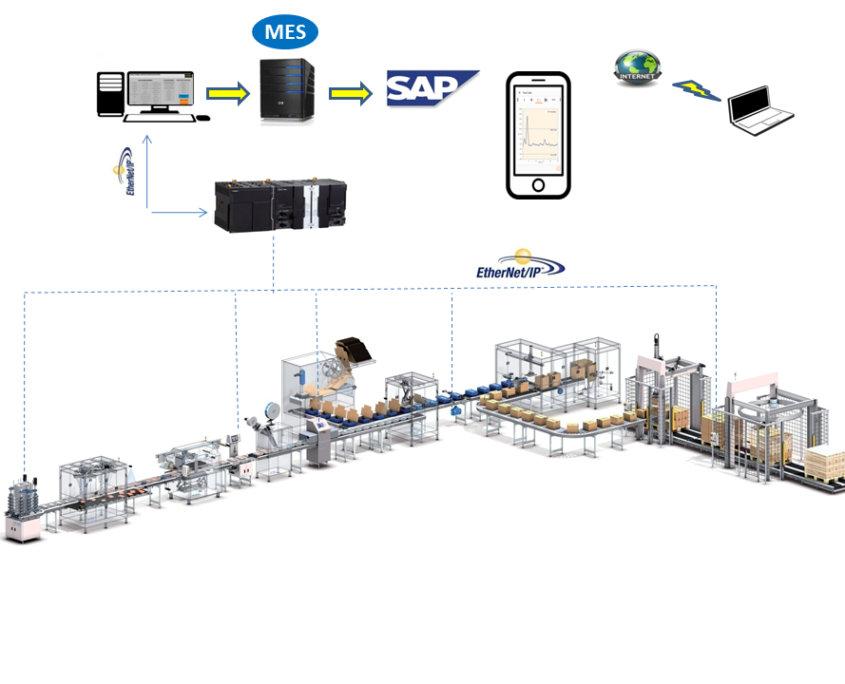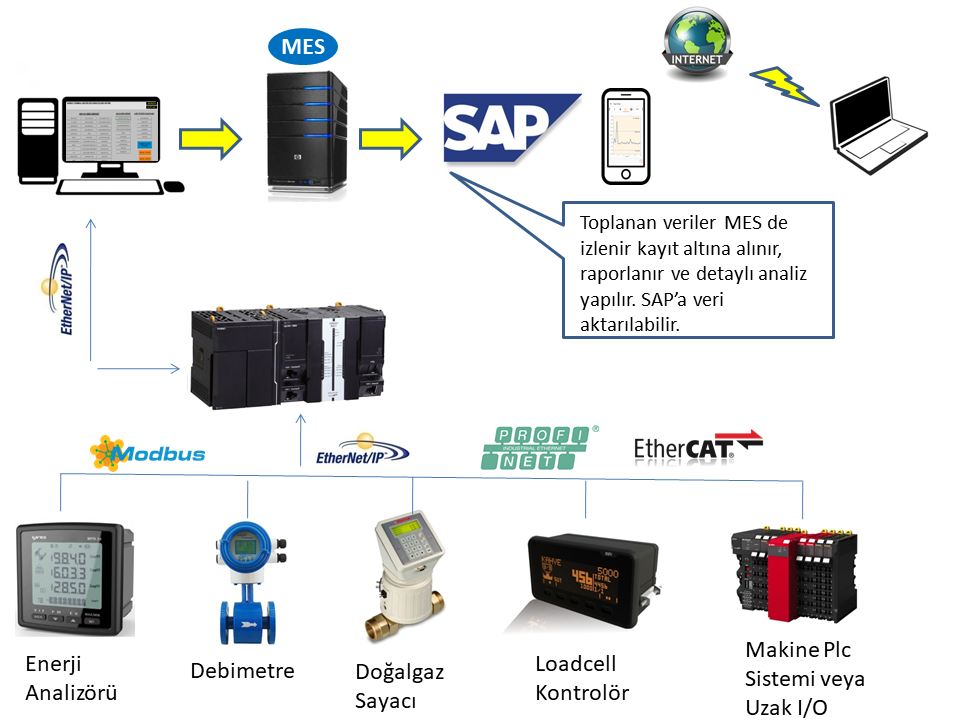
The most important factor for reports such as productivity analysis, predictive maintenance process, etc. is to transmit the online production data from machines, lines and robots to MES, SCADA or Reporting Software in a wholesome and accurate way.
For productivity analysis and reporting, it is essential to obtain the following data.
- Production quantity
- Work time
- Downtimes
- Production scraps
- Energy consumptions (Electricity, Water, Steam, Natural Gas)
- Type of product produced on machines, lines
- Alarms (for maintenance)
- Raw material amount
- Operator information
In order to collect these data, it is necessary to first integrate the machines. That is, first provide that all machines that are currently in production are to bring the data up (MES). The basis here is to install the network we installed in the “IRP” and “IT” systems on the machines in production as well. When such a demand comes up, as Omni we first investigate on the ground and prepare a situation analysis. The data network we usually create is Ethernet / IP or Ethercat based. Because our company is the official system partner of Omron Electronics in the field of industrial automation, hardware products (master PLC, remote I / O and HMI) that we usually use are Omron trademarks. Particularly, the quality of the remote I / O units used in collecting data is very important in terms of receiving the data and sending it to MES. It is very, very important that it is not affected by the harmonics in the factory, does not get parasitic, and is not affected by heat and humidity. In this regard, Omron is among the top companies in terms of quality.
As Omni, when such a demand comes up, we first investigate on site and prepare a situation analysis. The data network we usually create is Ethernet / IP or Ethercat based.
- We can analyze machines that are controlled with PLC on an MES based or similar platform by Ethernet/IP if they have Ethernet communication, or if they have Modbus RS485 we can route them via routers to Ethernet/IP and send desired production data to an SQL based or similar database.
- If the system is too old, there is no communication port on the PLC, or if there is no PLC, we can send the signals to the remote I/O and to MES via Remote / IO’s with Ethernet / IP or Ethercat communication port.
- If there is no sensor, we can receive data such as production quantities etc. through additional sensors.
- We can connect each machine or line with an energy analyzer for energy consumption and send the electricity consumption, water and gas consumption from the Flowmeter and Natural gas meters to the control system for analysis and report.
- We can follow the production using the HMI screens in front of the operators which they use to follow the machines or lines, by sending the job orders coming from the IRP system to the screens online and receiving the start signal “ok” from the panel.
Hardware Data Collection Diagram

